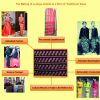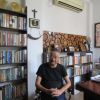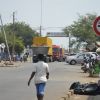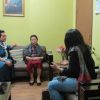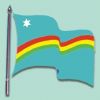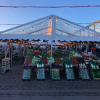The search found 11 results in 0.04 seconds.
Search results
Walking the Naga Day on 10 January is where memory and meaning meet for the contemporary Naga . It is also the first time that conscientious Nagas decided to create this event in a public forum to awaken every Naga's idea of home and the community.
It brings together the voices, visions and many aspirations of the community as they straddle the borders of peace and conflict , of work and ethics, of construction and destruction, of harmony and violence as they go forth with the promise of a new year into a more stable future .
In the first figure, the governors of Myanmar are being awarded the cloth as a mark of honour. Luntaya acheik was the sacred cloth of the ancient Myanmar royals. But under the colonial rule everyone could wear this acheik.
To know the preferences of the people of Myanmar better, the governemnt conducted a survey after which the acheik became the national costume.
"I think we were too fast with it all. Perhaps it was World War II that shaped the Naga soul. People come of age or in the process of coming of age, I think, in many ways we have been too idealistic. Instead of trying to work towards national construction, we were caught up in idealistic nationalism and I think traces of that idealistic mission still linger on today especially among the older generations... but the younger minds are beginning to be very critical and analytical at the same time, so I wish that the Naga movement began today.
Since 2007, I have been assisting Kojo Opoku Aidoo of Institute of African Studies, University of Ghana, to develop a humanistic Syllabus on ‘Mobilities of Grassroots Pan Africanism’as part of the Humanities across Borders Program. The project attempts to contextualize the praxis of mobilities as a grassroots pan Africanism issue in its multiple manifestations and nuanced dialectics. It also examines the tensions and contradictions of the academy and the community dialectic, bringing up questions of social mobilities and intellectual inquiry.
Sano Vamuzo is the founding President of the Naga Mothers’ Association (NMA), an important civil society organization formed by women in Kohima in 1984. The follwing is excerpted from an interview with Dr Rakhee Kalita Moral.
The whole Naga struggle, it is purely because of the invasion by India...this here is our land, this is ours. The coming of the English language too has given us new terms to describe us, including the word “indigenous” which itself is a way of saying that we are under India and it distorted our definition of who we are. After the British invasion, India too thought of us as a weak people and that it has a sense of ownership over us that led to the making of the state. It was an opportunity for Nehru to show a backup plan by giving us statehood which we didn’t ask for.
One of the first women to ever weave the Naga national flag, Lathon Kemp, passed away on the 5th of January, 2021. The news of her death brings to mind the flag and the very important place it holds in the life of the Nagas. Although, it was hoisted for the first time on the 22nd of March in 1956 in the Parashen-Rengma region, the Nagas believe the flag to have a divine origin and not designed by any mortal. A red, green and yellow rainbow is spread out against a field of blue which represents the sky.
Torvehallerne are food halls which are positioned in the center of Copenhagen which sell a large variety of food. This includes fresh vegetables, cheese, fish, and freshly baked bread. The prices are high and the focus is on quality and ecology, rather than price and quantity. The shops are specialized in offering a selection of products from their respective shops. In conversation with cashiers, they explained to me that the dialogue is what sets apart Torvehallerne from regular supermarkets. This is the conversation around the products being sold.
Magtanim Ay ‘Di Biro or ‘Planting is not a joke’ is an old children’s song from the Philippines, often sung as a nursery school rhyme. While it is considered by many (including my own family growing up) as a traditional song, the origins of the rhyme are much more recent, as I found out after being inspired by another accession card discussing Surinamese children's rhymes.
This song "Rise, Naga Woman" composed by Theyiesinuo Keditsu, music by Khyochano TCK and Topeni as soloist, was chosen as the winner for the ‘State Theme Song for Women’ and was released by the State Resource Centre for Women (SRCW) under the aegis of the Nagaland State Social Welfare Board (NSSWB) during a program organised to observe the International Day for the elimination of violence against women.
The song speaks to Naga women and asks them to spread their wings and rise up against discrimination and inspire all of Nagaland and take them to a glorious future.
In urban and suburban Nagaland, as in many of the conflict-affected regions of India's North-East, such signs calling into action people and collectives are commonly visible. In this poster, the church as site of popular resistance is agency for mobilisation of constituencies such as the youth towards a unified struggle for the Naga nation.


